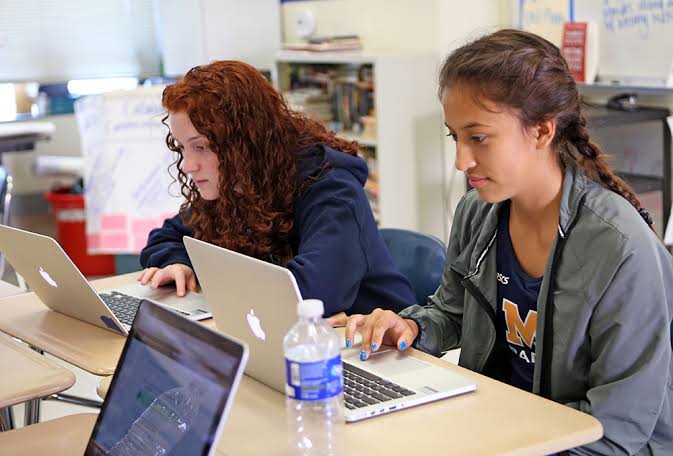The achievement gap has become a widely discussed topic in the field of education, highlighting the disparities that exist among different student groups in academic performance. But what does it mean? Not to worry! This article defines what the achievement gap means, and how to identify and close the gap to ensure equal education for all students. So, relax and read on!
What Is Achievement Gap?
The achievement gap is a popular term in education, referring to the persistent disparities in academic performance between different groups of students. It is a persistent issue in education systems worldwide that highlights the unequal access to quality education and the inequitable outcomes for marginalized students. You can measure this gap through standardized test scores, graduation rates, college enrollment, and other educational indicators.
The achievement gap is evident at all levels of education, from early childhood to higher education, and persists throughout a student’s academic journey. Meanwhile, many factors contribute to the achievement gap, including disparities in access to quality education, resources, educational funding, experienced teachers, and supportive learning environments.
Additionally, socioeconomic factors such as poverty, limited access to educational materials, lack of parental involvement, and systemic inequities further exacerbate the gap. However, closing the achievement gap requires addressing these systemic inequities, providing equal opportunities for all students, and implementing effective policies and strategies that promote educational equity and inclusivity.
What Is Another Word For Achievement Gap?
There are alternative terms you can use to describe the achievement gap. One such term is “opportunity gap,” which highlights the unequal access to resources and opportunities that can result in differences in academic achievement. This term emphasizes that the gap is a result of systemic barriers rather than individual deficiencies. It also calls attention to equal access to quality education for all students.
Another word to describe the achievement gap is “education disparity.” This term emphasizes the unequal distribution of educational resources and the resulting differences in academic outcomes between students from different backgrounds.
By using this term, it recognizes that there are various factors beyond individual capabilities that influence academic performance. They are funding disparities, teacher quality, curriculum differences, and cultural biases in educational systems. Hence, recognizing and understanding these disparities is crucial for addressing and closing the achievement gap to ensure educational equity and the success of all students.
How Do You Identify Achievement Gaps?
Identifying achievement gaps is an essential step in addressing educational disparities and ensuring equitable opportunities for all students. There are several steps you can take to identify these gaps and work towards closing them.
- Firstly, data collection and analysis is crucial. This involves examining academic performance, standardized test scores, graduation rates, and other relevant indicators. By disaggregating the data, you can identify specific groups of students experiencing lower achievement levels compared to their peers.
- Next, identify the specific factors contributing to the achievement gaps. This involves conducting further research, surveys, or interviews with students, parents, and teachers. With an understanding of the root causes, you can develop targeted interventions and strategies to address them.
- Additionally, collaborate and communicate with stakeholders, including teachers, administrators, parents, and community members. They are also key to identifying achievement gaps and working towards closing them. However, regular meetings, data reviews, and open discussions can help generate ideas, share best practices, and track progress in closing the gaps.
Ways To Close Achievement Gap
Closing the achievement gap is a critical goal of education systems worldwide. To achieve this, you should implement several strategies.
#1. Provide High-Quality Instruction
Firstly, providing high-quality instruction is essential. This includes hiring highly qualified and experienced teachers who can use effective teaching methods that cater to diverse learning styles.
#2. Implement Small Class
Additionally, implementing small class sizes can allow teachers to give attention to each student and tailor their instruction accordingly. With this, the teachers can easily observe the students and know when they are not following up.
#3. Incorporate Technology
Furthermore, incorporating technology in the classroom can enhance learning and provide additional resources for students who may need extra support.
#4. Address Socio-economic Factors
Another important approach to closing the achievement gap is addressing the socioeconomic factors that contribute to educational disparities. You can do this by providing resources and support to low-income schools and communities.
For example, offering after-school programs that provide academic support and mentorship can help bridge the gap between students from disadvantaged backgrounds and their more affluent peers.
#5. Offer Financial Aid
Finally, offering financial aid and scholarships to students from low-income families can ensure they have equal opportunities to pursue higher education. By addressing the root causes of the achievement gap and providing equitable resources and support, you can make significant progress to close the gap.
What Is An Example Of The Achievement Gap?
One example of the achievement gap can be in the field of employment. Despite progress towards inclusivity and equal opportunity, there are still significant disparities in employment rates and career advancement among different demographic groups.
Minority groups and individuals from disadvantaged backgrounds often face systemic barriers and discrimination that limit their access to job opportunities. This results in a significant gap in employment rates and earnings between different groups.
However, addressing the gap requires targeted efforts to eliminate bias and discrimination in recruitment and promotion practices. And provide equal opportunities for skill development and career advancement for all individuals.
What Are Examples Of Achievement Gaps In Education?
One common example is the gap between low-income students and their affluent counterparts. Low-income students often face numerous obstacles, which can hinder their academic success. Hence, this can result in significant disparities in test scores, graduation rates, and college enrollment rates between the two groups.
Another example is the gap between students of different races and ethnicities. For instance, studies show a notable achievement gap between white and minority students in the United States. Factors such as systemic racism, unequal educational opportunities, cultural biases, and language barriers contribute to this gap.
This disparity can be in standardized test scores, dropout, and college completion rates. So, addressing and narrowing these gaps is crucial to ensure equal educational opportunities and promote social equity.
What Causes Achievement Gaps?
One major cause is socioeconomic status. Students from low-income backgrounds often face various barriers to educational success, such as a lack of access to high-quality schools, resources, and parental support. This can limit educational opportunities and lower academic achievement among disadvantaged students.
Another significant factor is unequal access to educational resources and opportunities. Some schools may have inadequate funding, outdated curriculum, or limited extracurricular activities, which affect the overall learning experience and hinder student achievement. In addition, students in marginalized communities may face systemic challenges, such as discrimination, stereotypes, and biases. All these affect their motivation, engagement, and self-esteem, ultimately leading to lower academic performance compared to their peers.
Overall, a combination of social, economic, and educational factors causes achievement gaps and disparities in academic outcomes among students.
Does Achievement Gap Affect Business?
While it may not be immediately obvious, the achievement gap affects businesses. Firstly, a well-educated workforce is essential for the growth and success of businesses across industries. When there is an achievement gap, it means some segments of the population are not receiving the same education as others. This hampers their ability to acquire the necessary skills and knowledge to contribute meaningfully to the workforce. As a result, businesses may struggle to find qualified employees, particularly in industries that require specialized skills or expertise.
Secondly, the gap affects businesses in terms of innovation and competitiveness. When a certain population is left behind, it limits the pool of talent businesses can draw from. This translates into a lower level of diversity in the workforce, which in turn restricts the range of perspectives and ideas the business needs.
In other words, a lack of diversity and different perspectives can hinder innovation and limit a company’s ability to adapt to changing market demands. Thus, companies that fail to bridge the gap risk falling behind their competitors.
What Is The Biggest Contributor To The Achievement Gap?
The biggest contributor to the achievement gap is socioeconomic status. Research shows that students from low-income households tend to have lower achievement levels than their peers from higher-income backgrounds. This disparity comes from various factors including limited access to quality educational resources, inadequate healthcare, unstable home environments, etc.
How Do We Reduce The Achievement Gap?
Reducing the achievement gap requires a multifaceted approach that addresses systemic and individual factors. On a systemic level, it is crucial to enact policies and provide resources that promote equity and equal opportunities for all students. This includes investment in high-quality early childhood education, ensuring adequate funding, and implementing policies that support the diverse and inclusive curriculum.
Furthermore, individuals play a significant role in reducing the achievement gap. Teachers can employ culturally responsive teaching strategies that acknowledge and appreciate students’ diverse backgrounds.
Additionally, parents and families can support their children’s education by creating a positive learning environment at home, communicating with teachers, and advocating for their children’s needs. By addressing systemic and individual factors, you can narrow the gap and give all students equal opportunities to succeed academically.
What Are Barriers To Achievement?
Barriers to achievement are the obstacles, challenges, or limitations individuals face on their path to success. These barriers can stem from internal or external factors and significantly impede one’s ability to reach their goals. One common barrier to achievement is a lack of self-belief and confidence. When individuals doubt themselves and constantly underestimate their potential, they find it difficult to take risks and proceed. This self-imposed barrier limits their progress as fear of failure or negative self-talk draws them back.
External barriers to achievement can also hinder progress. These may include societal or cultural pressures and expectations, limited access to resources or opportunities, and discrimination or bias.
For instance, people from marginalized communities may face systemic barriers that prevent them from accessing quality education, job opportunities, or mentorship. Such external barriers can create a sense of injustice and inequality, making it harder for them to overcome obstacles and achieve their desired outcomes. However, overcoming these barriers to achievement requires self-awareness and determination.
Conclusion
In conclusion, the achievement gap is a complex issue that encompasses disparities in performance and educational opportunities among different groups of people. It not only highlights the persistent inequities in our education system, but also carries far-reaching consequences for individuals, communities, and society as a whole.
However, the above points will help you understand the causes and how to work towards bridging them to ensure equity and equal opportunities.






